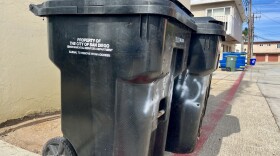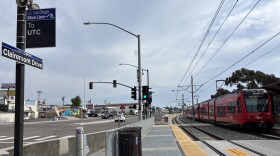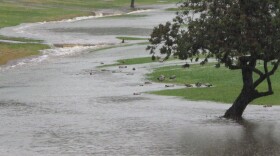The energy demands of AI and global warming are creating an impending energy crisis. That’s according to a new report by the San Diego Regional Economic Development Corporation (EDC).
That same report said nuclear fusion energy is one answer to the crisis, and also a potential source of future wealth for California.
Fusion is the creation of energy by fusing atoms. It’s an energy source that promises a virtually limitless supply of clean energy. Fusion would not produce the long-lasting nuclear waste that has bedeviled its better known cousin, nuclear fission.
The San Diego EDC report says fusion already has a foothold in the California economy:
- The state has 16 core fusion companies and has attracted $2.2 billion in funding.
- The industry has the potential to grow to between $48 and $125 billion.
But they also say California is a place of regulatory uncertainty and high land costs. It has grid interconnection delays and lacks a fusion-specific policy framework.
Eduardo Velasquez is director of research with the San Diego Regional EDC, who appeared with others at a Thursday press conference in San Diego. He said California is still in a great place to move from fusion research to commercialization.
“We lead in terms of talent. We lead in terms of private capital flows that are coming in. We have more fusion devices out of anywhere in the world,” Velasquez said. “So all the ingredients are here, we just need to make it happen.”
Congressional Rep. Scott Peters (D-San Diego) says the United States is facing tremendous competition in energy research and production from China. He said Californians must be receptive to the development of fusion power in their part of the state.
“This is not fission. This is not the stuff that generates waste. It doesn’t generate the risk that traditional nuclear power generates. So it’s a very safe thing. It should be easy,” Peters said.
The move to fusion has been called the “holy grail” of energy production.
“When you think about fusion energy, it is the most fundamental form of energy in the universe,” said Anantha Krishnan, senior vice president for the energy group at General Atomics.
General Atomics has been researching and experimenting with fusion energy since the late 1950s. Their DIII-D fusion reactor is in San Diego.
Krishnan said fusion energy takes place on the sun. And doing it on earth means containing tremendous heat in a power plant that needs to run 24/7.
“Each time we run an experiment we create conditions within DIII-D that make it the hottest point in our solar system. That means we are achieving temperatures that are ten times higher than the sun because to get to fusion on earth, that’s what you need to do,” Krishnan said.
People in the field say fusion energy could be ready to use in about 10 years. But only if the U.S. and California devote the money and resources needed to do it.





